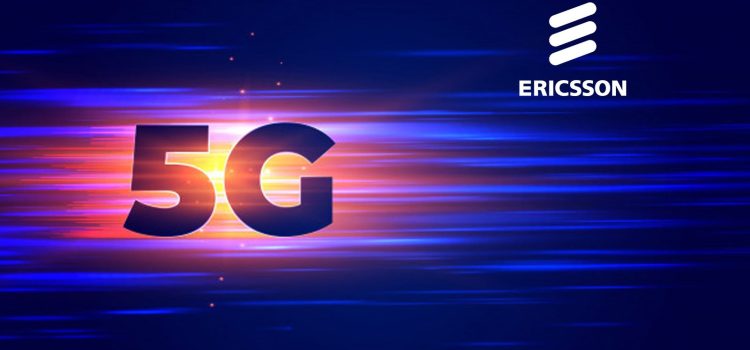
Introduction: Ericsson’s Software-Led Growth Initiative
In the ever-evolving realm of telecommunications, Ericsson, an industry leader, is making waves with its innovative strategy. Recent headlines have been ablaze with Ericsson’s pioneering shift towards software development, a move that has the potential to redefine the 5G landscape and fuel remarkable growth for the company. This article delves deep into the intricacies of Ericsson’s bold strategy, the driving forces propelling it, and the potential implications for the company’s growth in the era of 5G. Furthermore, we’ll present an insightful table summarizing key aspects of this transformative approach before drawing compelling conclusions.
Unveiling Ericsson’s 5G Growth Initiative
Reports have confirmed that Ericsson is placing significant emphasis on software development as a foundational element of its 5G growth strategy. This strategic shift marks a departure from the traditional hardware-centric approach that has long defined the telecommunications industry. Several compelling factors are driving this audacious move.
Seizing the 5G Opportunity
The global rollout of 5G networks presents an unparalleled opportunity for telecom companies. Ericsson’s strategic pivot towards software is perfectly aligned with the evolving demands and possibilities unlocked by 5G technology. Software solutions have the potential to elevate the capabilities of 5G networks and unlock innovative avenues for revenue generation.
Meeting Diverse Customer Needs
In the 5G era, customers are no longer content with mere connectivity; they demand innovative, customized services and solutions. Ericsson’s substantial investment in software empowers the creation of tailor-made offerings, allowing the company to meet the diverse and ever-evolving demands of its clientele.
Riding the Virtualization Wave
Network virtualization is a prevailing trend in the telecom industry. By developing advanced software solutions, Ericsson positions itself to play a pivotal role in the virtualization wave. This strategic shift allows for the provision of more flexible, scalable, and efficient network services.
Competing with Tech Titans
Tech giants like Google and Amazon are increasingly encroaching into the telecom space. Ericsson’s laser focus on software development equips the company to compete vigorously by leveraging its deep industry expertise and delivering comprehensive, end-to-end solutions.
Implications and Industry Impact
The strategic embrace of software development carries profound implications, not only for Ericsson but also for the broader telecom industry.

Revenue Diversification
Ericsson’s shift into software signifies a diversification of revenue streams. Beyond hardware sales, the company can now derive income through software licensing, maintenance, and subscription-based models, creating a more resilient and adaptable business model.
Enhanced Network Capabilities
Software-driven solutions have the potential to significantly enhance the capabilities of 5G networks. Ericsson’s software offerings can pave the way for faster, more reliable connections, positioning the company as an attractive partner for telecom operators striving to deliver superior services.
Sharpened Competitive Edge
Ericsson’s investment in software development positions it as a formidable contender in the dynamic telecom landscape. The company can leverage its profound industry knowledge and established relationships to provide holistic end-to-end solutions.
Pioneering Innovation
Software development empowers rapid innovation cycles. Ericsson can adeptly respond to emerging technology trends and swiftly evolving customer demands, ensuring that it retains its preeminent position in the 5G revolution.
A Comparative Analysis
To provide a holistic view of Ericsson’s strategic shift into software development and its potential impact, let’s compare this audacious move with other key players in the telecom arena:
| Company | Strategic Focus | Driving Factors | Implications | Competitive Edge |
|---|---|---|---|---|
| Ericsson | Software Development for 5G | Seizing 5G Opportunity, Meeting Customer Needs, Network Virtualization, Competition with Tech Titans | Revenue Diversification, Enhanced Network Capabilities, Sharpened Competitive Edge, Pioneering Innovation | Profound Industry Knowledge, Established Relationships |
| Nokia | End-to-End 5G Solutions | Expanding 5G Portfolio, Industry Partnerships, Network Infrastructure, Competition with Tech Titans | Comprehensive Offerings, Industry Collaboration, Competitive Edge, Innovation Leadership | Long-standing Expertise, Global Reach |
| Huawei | Full-Stack 5G Ecosystem | Global 5G Leadership, Research and Development, Network Infrastructure, Competition with Tech Titans | Comprehensive Ecosystem, Global Dominance, Competitive Edge, Technological Advancements | Extensive R&D Investments, Strong Market Presence |
| Cisco | Network Automation and Security | Network Transformation, Cloud Integration, Cybersecurity, Competition with Tech Titans | Enhanced Network Operations, Secure Environments, Competitive Edge, Industry Trust | Network Expertise, Cybersecurity Focus |
The comparative analysis underscores that Ericsson’s strategic shift into software development aligns seamlessly with seizing 5G opportunities, diversifying revenue streams, and harnessing a competitive edge through its industry acumen and established relationships.
Conclusion
Ericsson’s visionary leap into software development in the 5G era symbolizes its proactive response to the evolving telecommunications landscape. While the full impact of this strategic maneuver is yet to be fully realized, it firmly situates Ericsson to not only meet the evolving demands of the telecom industry but also lead in innovation and competitiveness.
The implications, ranging from diversifying revenue streams to augmenting network capabilities and maintaining a competitive edge, underscore the potential advantages of this transformative strategy. As the 5G revolution continues to unfold, Ericsson’s software-centric approach positions it at the forefront of shaping the future of telecommunications.










